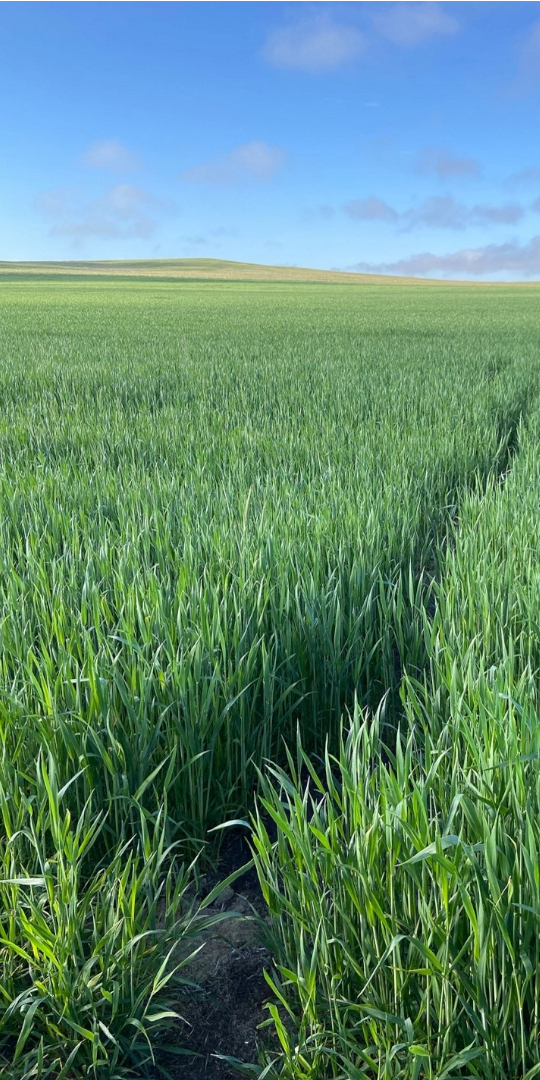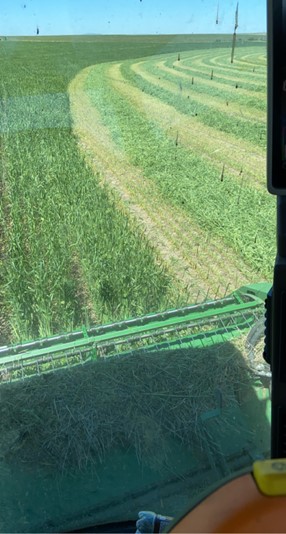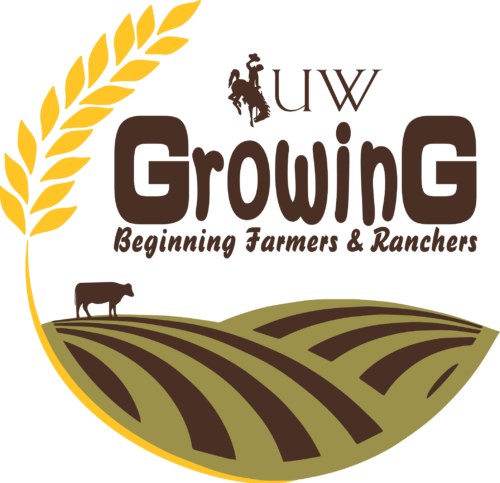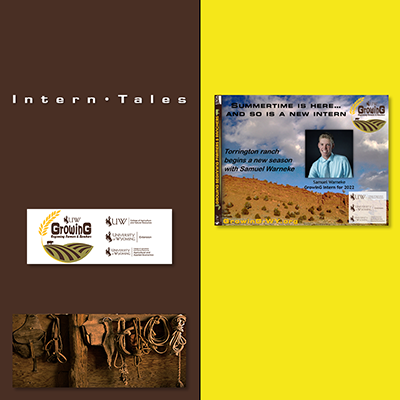Triticale, Swather Repair and Crop Rotations

Triticale [grain]
#bfrdpwy #aginternship #RightRisk
This week was a good week to spend inside the cab. Triticale needed to be cut and the hay lots around the farm needed to be baled up. Not only did we have to be in the cab, but it was preferred, due to the weather conditions: hot and dry on Monday, windy and cold on Tuesday and then returned back to the heat for the rest of the week.
A big thing I got to learn is operating and harvesting crops, the forage production side of ranching. Why it’s needed to have feed in the form of hay bales, so that over the winter when the cattle can’t reach grass under 2 foot of snow, they can set out bales on the surface.
I have learned why it is important to keep equipment up to running condition after I was cutting and a bearing in the swather head went out.

Cutting the triticale
One idea I would like to challenge would be a crop rotation concept I learned about this year. A three-year plan of potato, alfalfa and grass cover crop. This practice is good for breaking up the soil after potato crop has been planted and harvested and is helpful to eliminat[e]ing deep weeds and sedge grass that can takeover in the alfalfa. The idea I would challenge would be the time factor in the rotation.
Most growers that would benefit from the weed removal by the potato crop can’t implement it since it takes a year away from alfalfa production. A large amount of hay is lost during that year of potato crop, which would make feeding over the winter very difficult. If a rancher wanted to implement this rotation, he would need to have a replacement hay source before winter starts.

Replacing a bearing on the gear drive of the swather
[I wonder if] there is a big pest problem in alfalfa fields? Do deer or antelope feed on the crop or when it’s baled up? How [do ranchers] measure moisture levels in cut hay and alfalfa? What varieties or hybrids of alfalfa are available to growers and how can those help in times of drought? After a cutting how long between the next cutting of hay? After alfalfa gets cut, how well does the crop retain nutrients and water. If weeds end up in the bales, how [does that affect]well is the quality of the hay? After the rotation of the triticale cover crop, does the alfalfa get planted into the stubble or will it be disked up?
[I] learned why it’s important to fix and check up on your equipment and why it’s not always the best option to buy new equipment every time a problem occurs. All it took was a new bearing and a little bit of problem diagnosis to fix the swather. This saves a lot of money, by finding out what the problem is yourself and getting the parts to [re]assemble.
I also plan on learning more about moisture levels in hay [and] why hay should always dry out before it gets baled. It can clog up the baler if [it is] too wet and will cause problems later [due] to growing mold in the bale.
Submitted by: Samuel Warneke
Edited by: GrowinG Internship Team

